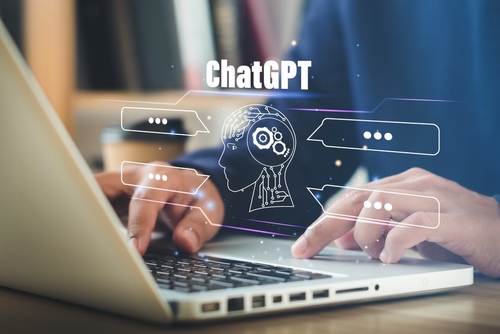Despite looming recession fears, recent research suggests that recruiters in 2023 should be optimistic. In iHire’s 2023 “Hiring & Job Search Outlook Report,” key findings reported that while 42.7% of employers are concerned about an economic downturn, 68.1% expected to increase their hiring in 2023.
Furthermore, the use of artificial intelligence (AI) in employment decision-making is on the rise. New technology such as ChatGPT and other AI are being used to streamline hiring and onboarding practices.
If you’re looking to implement AI or don’t know where to begin – don’t fret! Dr. Lindsey Zuloaga, Chief Data Scientist at HireVue – a tech-based hiring tool – recently shared her insights with HR Daily Advisor on how companies are utilizing AI, its benefits and challenges, as well as best practices for implementation.
Here’s what she had to say.
How are companies are utilizing ChatGPT?
I work in the hiring and talent acquisition space, and our Science Team is eagerly researching ChatGPT to see if there are ways it could benefit our customers and their candidates. For recruiters, first drafts of offer letters and job descriptions come to mind as areas where ChatGPT could save time. And candidates could use generative AI to help them improve cover letters and resumes. I’m particularly interested in how ChatGPT could be used to help job seekers transition industries by better understanding how their skills are applicable across different roles.
What are the benefits of this tool?
One of the benefits of AI is when it’s used in conjunction with humans to automate mundane tasks so that humans can focus on the things we are uniquely good at. It is still very early, but I think we’re going to see interesting results for candidates and recruiters alike who use ChatGPT.
What are the challenges of this tool?
Most of us have interacted with AI in some way, whether it’s returning clothes to an online retailer, making a dinner reservation, or asking about the status of a job application. Interactions of this kind are the typical, benign chatbot use cases, but ChatGPT and other generative AI tools are raising well-deserved concerns.
The primary concern I’m seeing is about the proliferation of disinformation. Frankly, innovation has outpaced safeguards, and it’s important that researchers and technologists are asking critical questions and rapidly trying to build in safeguards.
Can you offer some advice on how specifically to roll the technology out to the organization?
Rigorous testing is the bedrock of any product strategy, and every powerful tool should undergo testing before it’s deployed, as well as after. The details of that testing will vary by product. For the Science Team at HireVue, our standard procedure for pre-hire assessments is as follows:
- Pre-deployment testing to ensure maximum predictive accuracy and minimal group differences, ensuring that models meet our standards on both.
- The deployed algorithm is then ‘locked,’ meaning that it will not change in the wild as candidates are interacting with it.
- Our team conducts model refreshes for every algorithm, no less than annually, to ensure continued validity and fairness.
Can you provide a few best practices for implementing ChatGPT?
Any powerful tool requires constant and rigorous oversight and generative AI is no exception. It’s important that vendors don’t jump to integrate the ChatGPT model into existing tools until they’ve conducted rigorous testing.
New AI regulations are being proposed and passed constantly, from the new EU AI Act to NYC Local Law 144, and generative AI should be held to the same, if not greater, standards as other AI tech. First and foremost, vendors should be able to explain how their AI systems were trained and how they should be used to people with any level of technical expertise. It is important for vendors to demonstrate that models work as well as audit them for bias. I believe creators of these tools should prioritize creating an AI Explainability Statement, which is a valuable third-party process that documents to the public, customers, and users how a given technology is developed and tested.

